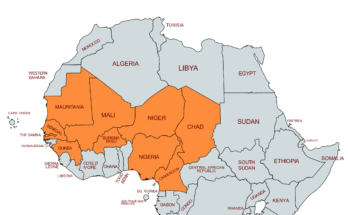by Dan Darling, International Military Markets Analyst, Forecast International.
Japan’s Ministry of Defense is facing a dilemma in its quest to develop an indigenous stealth combat aircraft that would replace the Japan Air Self-Defense Force (JASDF) fleet of F-2 fighters starting around 2030.
Reports emanating in Japanese media on March 5 suggested that the Defense Ministry is looking to scrap plans for domestic development of the fighter due to the engineering hurdles and escalating costs involved in an indigenized project.
The MoD, in turn, was quick to deny such reports the following day on March 6 in an article published in Jane’s Defense Weekly, insisting that all options on how to move the program forward remain on the table. Those options include the aforementioned full development of a new fighter, licensed production of an existing design (ostensibly the F-35), joint development of a new fighter with a foreign vendor, or simply an F-2 upgrade and refurbishment program (the least likely option).
Regardless, the obstacles confronting Japan in developing its own fighter are indeed quite real. Foremost among these challenges is the estimated price tag: around $40 billion (JPY4.24 trillion). That cost projection led the Finance Ministry to question the financial logic of the project and the Defense Ministry to reportedly opt to bypass funding requests for the project under the next budget proposal due for 2019. In turn, the MoD is seeking Requests for Information (RFIs) and proposals for a new advanced jet fighter based on an existing Western platform and will reach out to both the United States and the U.K. for aid in jump-starting development of its fighter. Such an arrangement with Washington would not be unprecedented, as the U.S. helped Japan develop its F-2, which is based on the Lockheed Martin F-16 and began entering service in 2000.
Japan seeks to retain and grow its industrial aviation know-how through the project for the new fighter, dubbed the F-3, with Mitsubishi Heavy Industries (MHI) playing a leading role. MHI helped build a small airframe technology demonstrator, the Advanced Technology Demonstrator-X (ATD-X) Shinshin (“Heart of God”) that was rolled out on January 28, 2016. Test flights of the now renamed X-2 demonstrator began with a first flight on April 22, 2016. Funded through the Defense Ministry’s Acquisition Technology & Logistics Agency (ATLA), the development of the X-2 prototype cost the government $360+ million while remaining a research and development project in infancy and nothing remotely close to a stealthy fifth-generation combat aircraft.
Having to climb a steeper funding curve to go beyond the X-2, the Defense Ministry is eager to feel out the U.S. and U.K. governments regarding cooperative arrangements to replace the F-22 and Typhoon, respectively, in those allies’ fighter inventories. Japan had hoped to acquire the fifth-generation F-22 from the U.S., but Washington flatly refused to sell the fighter to even its closest allies.
Now with both the U.S. and Britain looking down the road toward long-term replacements, Japan hopes to convince these potential partners of the value of working together on a joint new-generation fighter in order to achieve economies of scale and push down costs. Lockheed Martin and BAE Systems are viewed as potential manufacturing partners.
But the Japanese government must push forward quickly in discussions regarding such a collaboration if it is to fit F-3 costs into its next five-year defense equipment plan (called the Mid-Term Defense Program, which will cover fiscal years 2019 through 2023), kicking off in April 2019. The planning for the Mid-Term Defense Program began in the first half of 2017 and the Defense Ministry hoped to have its final report out this spring.
That date may now need to be pushed back several months while a plan is formulated on how to best replace the F-2 fleet by 2030 as originally envisioned. The other option – to upgrade the F-2s and push back their out-of-service date in order to buy additional time – would provide Japan financial breathing room to gradually purchase more F-35s (an option under consideration) or a bit of latitude in order to forge the desired collaborative arrangement with an allied partner for developing an advanced fighter.
Please feel free to use this content with Forecast International and analyst attributions, along with a link to the article. Contact Ray Peterson at +1 (203) 426-0800 or via email at ray.peterson@forecast1.com for additional analysis.
The Forecast International International Military Markets series examines the military capabilities, equipment requirements, and force structures inventories of 140 countries, with corresponding coverage of the political and economic trends shaping the defense market outlook for individual countries and regions.
For 50 years, Forecast International intelligence reports have been the aerospace and defense industry standard for accurate research, analysis, and projections. Our experienced analysts compile, evaluate, and present accurate data for decision makers. FI's market research reports offer concise analysis of individual programs and identify market opportunities. Each report includes a program overview, detailed statistics, recent developments and a competitive analysis, culminating in production forecasts spanning 10 or 15 years. Let our market intelligence reports be a key part of reducing uncertainties and mastering your specific market and its growth potential. Find out more at www.forecastinternational.com



